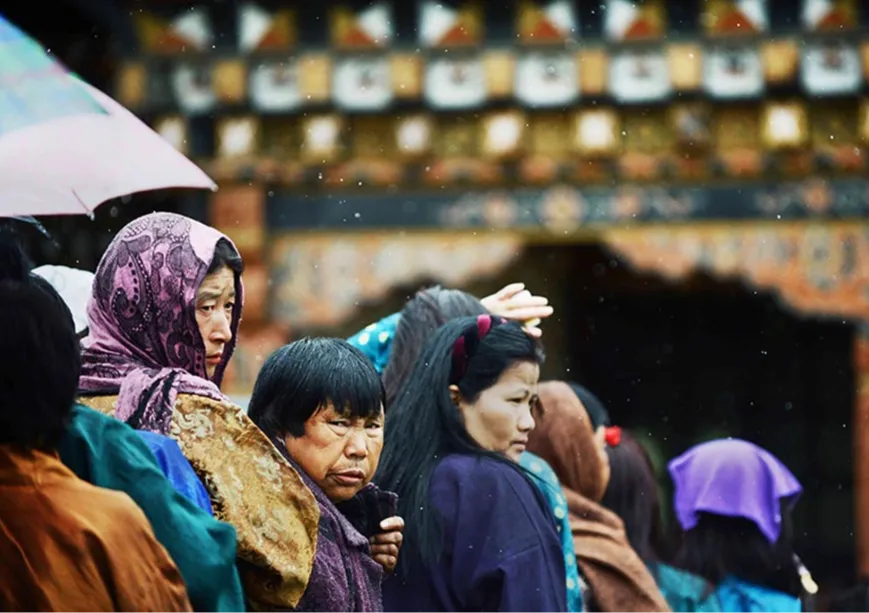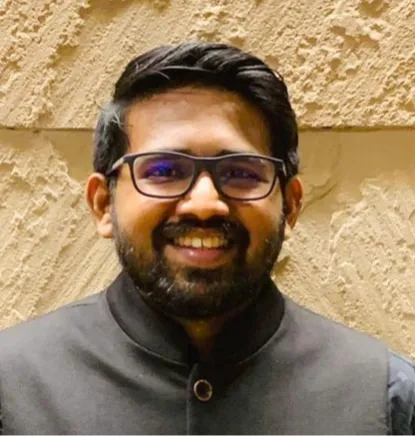
Since Bhutan’s democratic transition in 2008, its electorate has voted for a new prime minister and party every five years. However, on 9 January, Tshering Tobgay and his People’s Democratic Party (PDP) made history by getting re-elected to power. Economic hardships in the country, combined with the experience, and track record of the PDP government, have likely contributed to this result. The new administration will make little difference in Bhutan’s border negotiations with China, but with an ambition to revive the country’s economy, it will push for deeper economic cooperation and partnership with India.
Border issue
As a constitutional monarchy, democratic governments in Bhutan often abide by the core elements of their foreign policy, which include friendship with India, being sensitive to Indian interests, and ending the border dispute with China. The King is the moral guide of Bhutan’s foreign policy, the supreme commander-in-chief of its armed forces, and the de-facto decision-maker on defence and security-related matters. As a result, subsequent elected governments have continued with their predecessor’s foreign policy vis-á-vis China. They have all ultimately aimed at ending the border dispute, albeit with a change in their style and tactics of negotiations.
As a constitutional monarchy, democratic governments in Bhutan often abide by the core elements of their foreign policy, which include friendship with India, being sensitive to Indian interests, and ending the border dispute with China.
For instance, with increasing Chinese intrusions in the early 2000s, the first elected PM Jigme Thinley (2008-2013), decided to conduct joint surveys with China in the western disputed regions. He also discussed the possibility of having diplomatic relations with China to close the border dispute and promote economic cooperation. The second PM Tshering Tobgay (2013-2018), dismissed the possibilities of diplomatic relations with China and revived the tradition of annual border negotiations from 2013 to 2016. By 2016, both the countries had even completed joint surveys in the northern and western disputed sectors. However, Chinese intrusions in Doklam in 2017 and the subsequent standoff introduced a stalemate in these negotiations.
The third PM, Lotay Tshering (2018-2023), attempted to break this stalemate in 2020, as India and China clashed in Galwan, and China made new claims in Bhutan’s Sakteng region. The government used the pre-existing Expert Group Meetings (EGM) mechanism to silently resolve differences. In 2020, both countries negotiated the three-step roadmap to demarcate borders and signed a Memorandum of Understanding (MoU) in 2021 during the 10th EGM. In 2023, both the countries held 11th, 12th, and 13th EGMs. A Joint Technical Team (JTT) met on the sidelines of the 13th EGM to demarcate the borders. Both countries also held the 25th round of negotiation, where they signed an agreement to outline the functions and responsibilities of JTT and discussed the possibilities of establishing diplomatic relations. The delimitation of borders is likely the first step of the three-step roadmap MoU and will be followed by visiting and then finalising the demarcated borders. However, the government had on multiple occasions assured that these negotiations exclude the Doklam trijunction, which will be dealt with separately by India, Bhutan, and China.
As a constitutional monarchy, democratic governments in Bhutan often abide by the core elements of their foreign policy, which include friendship with India, being sensitive to Indian interests, and ending the border dispute with China.
With PM Tshering Tobgay returning to power, there are fewer possibilities of change in the ongoing negotiations. His government, like his predecessors, will aim at closing the border dispute soon. Having come closer to partially resolving the border dispute, the new government will be cautious of antagonising China. The apprehension to derail this progress will also disincentivise the Tobgay government from debating on diplomatic relations with China as before. Furthermore, Bhutan’s economic aspirations, increasing trade with China, and China's economic might, aggressions, and intrusions are incentivising Bhutan to demarcate the border at the earliest. The new government will, therefore, continue with negotiations, communicate with India, respect Indian concerns, and hesitate to antagonise China even as its intrusions and aggressions grow.
Economy and development:
The new government also has a massive responsibility of course-correcting the Bhutanese economy. Bhutan has had an average growth rate of a mere 1.7 percent in the last five years. It is facing high inflation, high youth unemployment (29 percent), and mass migration of the working population, and its business and tourism sectors have failed to recover from the shocks of COVID-19. The country’s borrowings and imports have increased, revenues have dwindled, and foreign reserves have reached US$ 467 million—just US$3 million above the minimum threshold.
For economic recovery, the new government is keen on aligning its manifesto with the 13th Five-Year Plan. Both the plans aim at promoting infrastructure, roads, water supply, privatization, FDIs, Public-Private Partnerships, and better connectivity. The government is also keen on expanding and strengthening the tourism industry. These initiatives will promote socio-economic development and increase revenues, foreign reserves, and employment opportunities. As a result, the ambitious 13th five-year plan has seen an outlay of INR 510 billion, a 30-percent increase from the 12th five-year plan, which had a budget of INR 390 billion.
On its part, India will continue to be Bhutan’s largest development partner. Estimates indicate that India will offer INR 100 billion in assistance for the 13th plan, while Japan, the European Union (EU), and other multilateral agencies will provide another INR 40 billion. If sanctioned, India's assistance will see a whooping increase from its INR 45 billion for the 11th and 12th five-year plans. In addition, the government is keen to request grants worth INR 15 billion from India for a stimulus package.
Hydropower in Bhutan contributes to 63 percent of Bhutan’s total exports, 14 percent of GDP, and 26 percent of government revenues.
Hydropower is another sector where both countries will increase their cooperation for the next five years. For decades, India has assisted Bhutan's hydropower projects with financial and technical assistance and has imported hydropower in return, contributing to a win-win relationship between both countries. Today, hydropower in Bhutan contributes to 63 percent of Bhutan’s total exports, 14 percent of GDP, and 26 percent of government revenues. As a result, more than INR 300 billion of the 13th plan is budgeted for hydropower and renewable energy. The new government has pledged to develop six mega hydropower and seven small hydropower projects and expedite and prioritise Punatsangchhu 1, Punatsangchhu 2, and the Kholongchu projects. The 1,020 MW Punatsangchhu 2 project will also commence operations in October 2024.
In addition, Bhutan is also focusing on infrastructure. It will be constructing the Gelephu Mindfulness City project—a 1000 sq km Special Administrative Region (SAR) that borders India’s Assam. Besides, the government aims to establish new SEZs, Export Processing Zones, Autonomous Economic Areas, and industrial estates, operate five dry ports, and check the feasibility of establishing airports in the east and south and casinos to the south of the country. These initiatives are expected to attract FDIs, increase trade and economic growth, and promote tourism.
The new government has also proposed six border towns that could act as entry or exit points for tourists from India and other countries to meet its objective of attracting almost 3,00,000 tourists per year.
Connectivity with India will be a crucial determinant for the success of these Bhutanese projects. For instance, the rail link connecting Gelephu to Kokrajhar will be vital for the Gelephu city project, but it might need even more concrete push for rail, road, and air connectivity with India. A new rail link is under discussion between Samtse and Banarhat. Both India and Bhutan are exploring the possibility of opening new integrated checkposts to promote trade. These projects will be crucial to promote Bhutan's trade and linkage with the rest of South and Southeast Asia, as the country aims to sign free trade agreements with Nepal, Bangladesh, and Thailand. The new government has also proposed six border towns that could act as entry or exit points for tourists from India and other countries to meet its objective of attracting almost 3,00,000 tourists per year. In addition, with 57 percent of current FDI coming from India, Bhutan hopes to woo more Indian investments. In 2023, the king met prominent Indian business personalities wooing investments in Bhutan.
Describing the Gelephu project, Bhutanese journalist Tenzing Lamsang tweeted on X, stating that “this project is a testimony of Bhutan’s trust in India.” The same is true for the country's 13th plan and the new government's grand initiatives. While the new administration will make little difference in Bhutan’s border negotiations with China, it will promote deeper economic cooperation and integration with India. There is hope that robust and accelerated integration may right-track Bhutan’s economy and stop the youth from leaving the country.
Aditya Gowdara Shivamurthy is an Associate Fellow with the Strategic Studies Programme at the Observer Research Foundation
The views expressed above belong to the author(s). ORF research and analyses now available on Telegram! Click here to access our curated content — blogs, longforms and interviews.




 PREV
PREV


